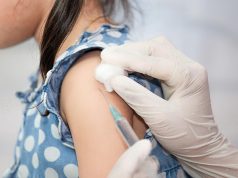Greatest declines seen among vaccinated women; decreases also seen in unvaccinated women
WEDNESDAY, Feb. 27, 2019 (HealthDay News) — The proportion of human papillomavirus (HPV) 16/18-positive cervical intraepithelial neoplasia grades 2 to 3 or adenocarcinoma in situ (CIN2+) declined from 2008 to 2014, according to a study published online Feb. 21 in Cancer Epidemiology, Biomarkers & Prevention.
Nancy M. McClung, Ph.D., from the U.S. Centers for Disease Control and Prevention in Atlanta, and colleagues analyzed data from a five-site surveillance system. The authors tested archived specimens from women aged 18 to 39 years diagnosed with CIN2+ for 37 HPV types.
The researchers found that the proportion and estimated number of cases of HPV 16/18-positive CIN2+ among 10,206 cases declined from 52.7 to 44.1 percent from 2008 to 2014 (1,235 to 819 cases). The proportion of HPV 16/18-positive CIN2+ declined among vaccinated (55.2 to 33.3 percent) and unvaccinated (51 to 47.3 percent) women; those aged 18 to 20 (48.7 to 18.8 percent), 21 to 24 (53.8 to 44 percent), 25 to 29 (56.9 to 42.4 percent), and 30 to 34 years (49.8 to 45.8 percent); CIN2/3 (61.8 to 46.2 percent); and non-Hispanic whites (59.5 to 47.9 percent) and non-Hispanic blacks (40.7 to 26.5 percent).
“This is clear evidence that the HPV vaccine is working to prevent cervical disease in young women in the United States,” McClung said in a statement. “In the coming years, we should see even greater impact as more women are vaccinated during early adolescence and before exposure to HPV.”
One author disclosed financial ties to Merck.
Copyright © 2019 HealthDay. All rights reserved.








